I have republished my post of the Chinese New Year which you can see here:
My Virtual Walk ‘LONDON. 1066 AND ALL THAT VIRTUAL WALK’ is this Sunday 9th Jan. You can book here: But this is a short podcast about 1066 and London.

The Past brought to Life
I have republished my post of the Chinese New Year which you can see here:
My Virtual Walk ‘LONDON. 1066 AND ALL THAT VIRTUAL WALK’ is this Sunday 9th Jan. You can book here: But this is a short podcast about 1066 and London.
December 2021
Ring in the New Year Virtual Tour
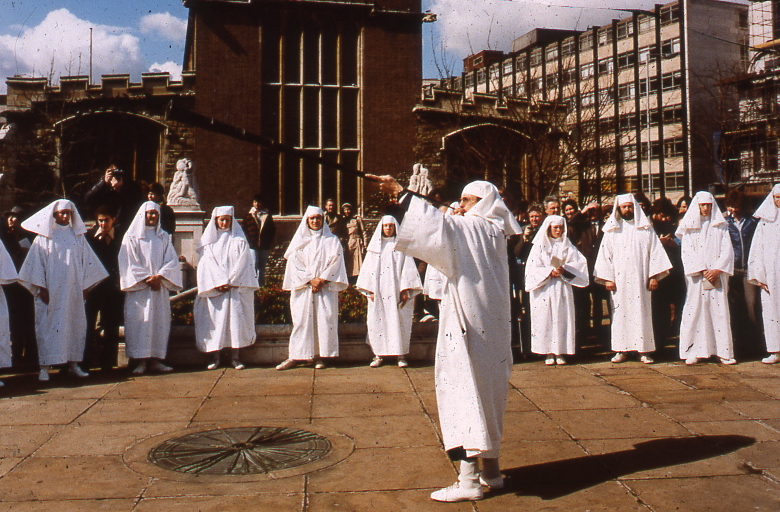
On this walk we look at how London has celebrated the New Year over the past 2000 years, and using our crystal ball look forward to what will befall London in 2022
Sunday January 2nd 2022 7.30pm
We look at London’s past to see where and how the Solstice might be celebrated. We also explore the different New Years we use and their associated Calendars – the Pagan year, the Christian year, the Roman year, the Jewish year, the Financial year, the Academic year and we reveal how these began. We look at folk traditions, Medieval Christmas Festivals, Boy Bishops, Distaff Sunday and Plough Monday, and other New Year London tradition and folklore.
At the end we use ancient methods to divine what is in store for us in 2022.
The walk finds interesting and historic places in the City of London to link to our stories of Past New Year’s Days. We begin, virtually, at Barbican Underground and continue to the Museum of London, the Roman Fort; Noble Street, Goldsmiths Hall, Foster Lane, St Pauls, Dr Commons, St. Nicholas Colechurch and on towards the River.
CHRISTMAS & JANE AUSTEN’S LONDON VIRTUAL WALK
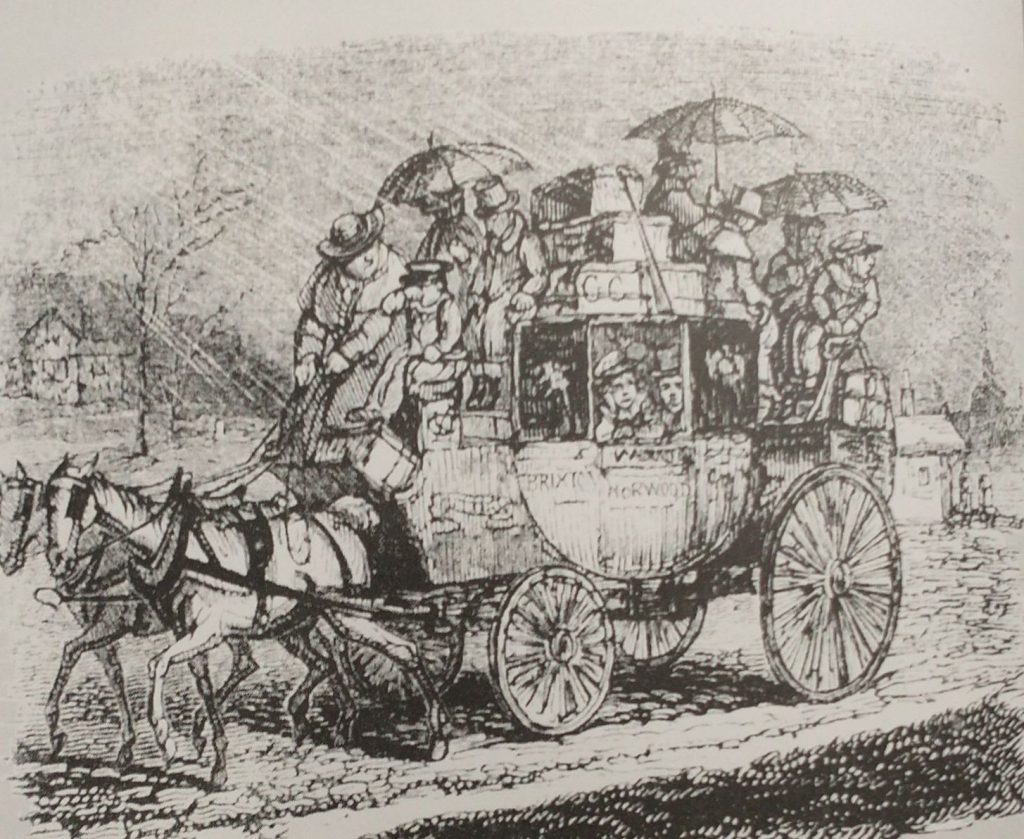
Sunday 19 December 2021 7.30pm
We look at Jane Austen’s London , Sense & Sensibility and Christmas traditions and amusements.
“It is a truth universally acknowledged, that a Jane Austen devotee in possession of the good fortune of a couple of free hours must be in want of this walk.”
The walk is in Mayfair, which Jane Austen frequented when visiting her banking brother, Henry and was the location of the London section of Sense and Sensibility. So its a fascinating place to follow the immoral Willoughby, sensible Elinor, overwrought Marianne, dull but nice Edward Ferrars, dull and horrible Robert Ferrars, stolid Colonel Brandon, vulgar but kind Mrs Jennings and her unforgivably vulgar daughter Mrs Palmer with her despairing husband; and the Steeles gals ruthlessly working their assets.
We also look at the traditions of Christmas during the Regency period and how Jane Austen might have celebrated it.
Mayfair was also the centre of the Ton – the wealthy elite of Regency London. It was here that the French Royal family in exile hung out. The haunt of Beau Brummel and the Prince Regent, loungers-in-chief who were so well satirised in the figure of Persuasion’s Sir Walter Elliot. This is where the rich shopped for guns, swords, cigars, snuff, hats, shoes, tailored clothes, uniforms, cures for constipation, wine, prostitutes, and lovers. They came to visit art galleries, see panoramas of European Cities, to ‘see the invisible woman living in her glass jar’, to choose their Wedgwood pottery
This is a London Walks Guided Walk by Kevin Flude, Museum Curator and Lecturer.
ROMAN LONDON – A LITERARY & ARCHAEOLOGICAL VIRTUAL WALK
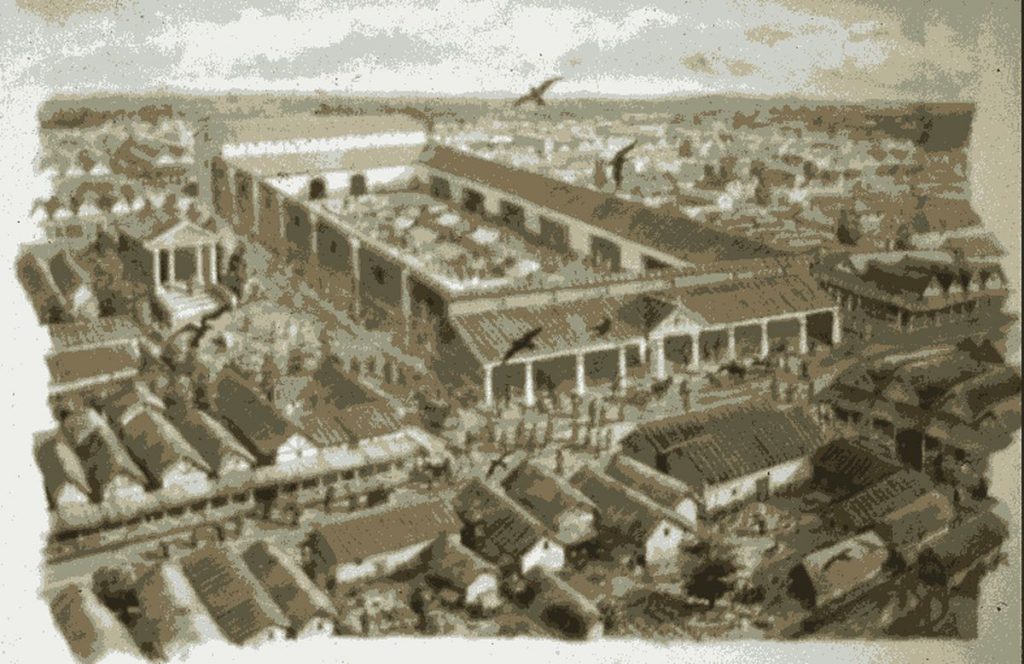
Sunday 12 December 2021 11.30 MONUMENT TUBE VIRTUAL TOUR 7.30pm
This is a virtual sightseeing tour of Roman London accompanied by Ovid, Martial, ex Museum of London Archaeologist Kevin Flude and others. It features the amazing archaeological discoveries of Roman London, and looks at life in the provincial Roman capital of Londinium.
We disembark at the Roman Waterfront by the Roman Bridge, and then explore the lives of the citizens as we walk up to the site of the Roman Town Hall, and discuss Roman politics. We proceed through the streets of Roman London, with its vivid and cosmopolitan street life via the Temple of Mithras to finish with Bread and Circus at the Roman Amphitheatre.
Publius Ovidius Naso and Marcus Valerius Martialis will be helped by Kevin Flude, former Museum of London Archaeologist, Museum Curator and Lecturer.
November 2021
ZEPPELIN NIGHTS – A VIRTUAL WALK FOR REMEMBRANCE SUNDAY
Sunday 14 November 2021 6.30pm
We follow the route of a Zeppelin Raid through London. On the way we discover London in World War 1
Oct 2021

SUNDAY 31st October 2021 2.30pm Tower Hill Underground Station
The walk tells the story of London’s myths and legends and the Celtic origins of Halloween.
The walk is led by Kevin Flude, a former archaeologist at the Museum of London, who has an interest both in the archaeological evidence as well as the myths and legends of London’s origin.
The walk will tell the story of a selection of London’s Myths and Legends, beginning with the tale of London’s legendary origins in the Bronze Age by an exiled Trojan called Brutus. Stories of Bladud, Bellinus, Bran and Arthur will be interspersed with how they fit in with archaeological discoveries.
As we around the City we also look at the origins of Halloween celebrations and how they may have been celebrated in early London
The virtual route starts at Tower Hill, then down to the River Thames at Billingsgate, to London Bridge and Southwark Cathedral, to the Roman Forum at the top of Cornhill, into the valley of the River Walbrook, passed the Temple of Mithras, along Cheapside to the Roman Amphitheatre, and finishing up in the shadow of St Pauls.
This is a London Walks Guided Walk. Look at their web site for a list of other of their amazing walks.
REVIEWS (from London Walks website)
“Kevin, I just wanted to drop you a quick email to thank you ever so much for your archaeological tours of London! I am so thrilled to have stumbled upon your tours! I have wanted to be an archaeologist since 1978 at the ripe old age of 8 years,… I was told for years that I could not be an archaeologist [for any number of reasons, which I now realise are completely ridiculous!], so I ended up on a different course of study. And now at the age of 50, it is my one great regret in life. So, I am thoroughly enjoying living vicariously through you, the digs you’ve been on, and the history you bring to life for us! British archaeology would have been my specific area of study had I pursued it. ?? Thank you SO MUCH for these! I look forward to them more than you can imagine, and honestly, I’ll be sad if you get them down to 1.5 hours! They’re the best 2 hours of my week! Best, Sue
Sept 2021
RING IN THE EQUINOX VIRTUAL WALK

Tuesday 21st September 2021 7.30pm
On this walk we look at London at the Equinox, its calendars, folklore and events associated with the beginning of Autumn
To book
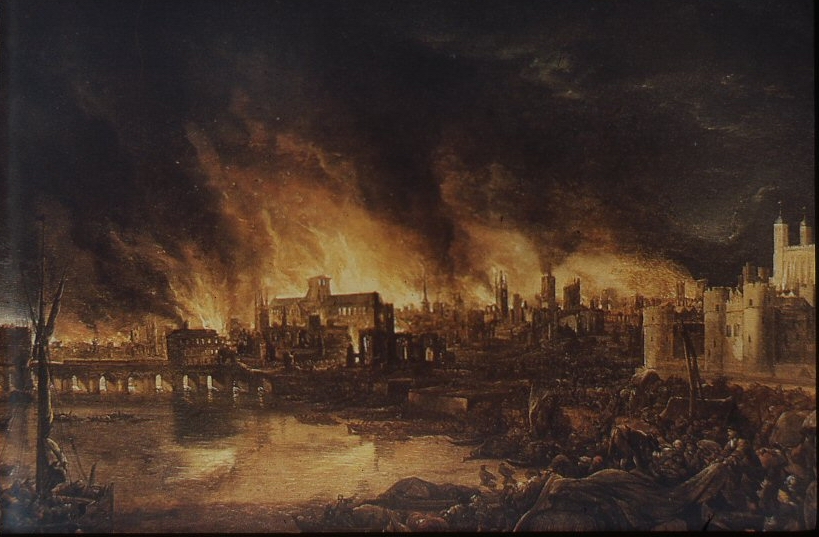
I am preparing my autumn and winter programme of Virtual Tours but am starting with:
THE GREAT FIRE OF LONDON ANNIVERSARY VIRTUAL WALK
Virtual Zoom Walk on Sunday Sept 5th 6.30pm
Short Description
On the Anniversary of the Great Fire of London we retrace the route of the fire of 1666 from Pudding Lane to Smithfield.
Description
Along with the Norman Conquest of 1066 and winning the World Cup in 1966 the Great Fire in 1666 are the only dates the British can remember! And we remember the Great Fire because it destroyed one of the great medieval Cities in an epic conflagration that shocked the world.
At Pudding Lane we investigate theories as to how the Fire started, and spread so quickly. At the Monument we look at whom contemporary Londoner’s blamed for the Fire and why they might have started it.
We follow the Fire through the streets, alleys, houses, squares and churchyards of the City and look at the few post-fire buildings that have survived redevelopment. The walk puts the Great Fire in the context of the time – Civil War, anti-catholicism, plague, and the commercial development of London. We also look at Stuart fire fighting techniques and.the rebuilding of the City after the Great Fire.
The walk brings to life 17th Century London, and vividly recreates the drama of the Fire as experienced by eye-witnesses. Route includes: Fish Street Hill, Pudding Lane, Monument, Royal Exchange, Guildhall, Cheapside, St Pauls, Amen Corner, Newgate Street, Smithfield.
To Book click here
JUNE 2021
THE PEASANTS REVOLT ANNIVERSARY VIRTUAL WALK
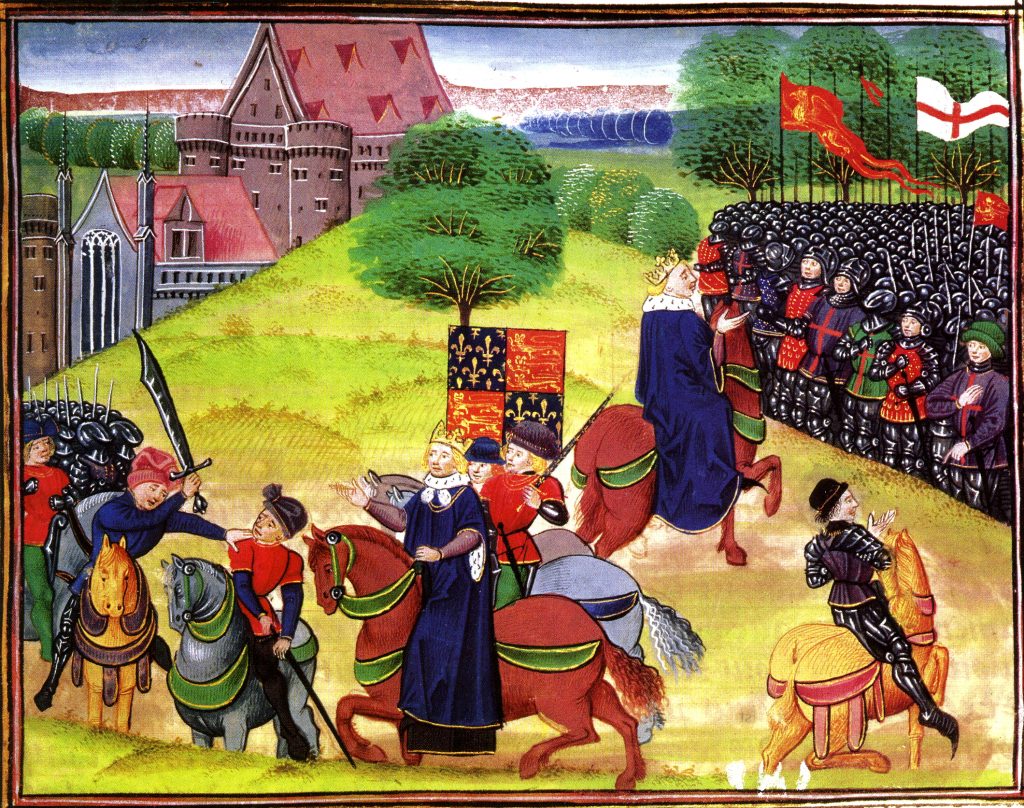
Sunday 13th June 2021 6.30pm
A Virtual Walk tracking the progress of the Peasants as they take control of London
JANE AUSTEN’S VIRTUAL LONDON SENSE & SENSIBILITY WALK
Sunday 20th June 2021 6.30pm
Exactly what it says on the tin. With sense, sensibility, pride but no prejudice we’re on the trail of the great novelist. Jane Austen’s London.
MAY 2021
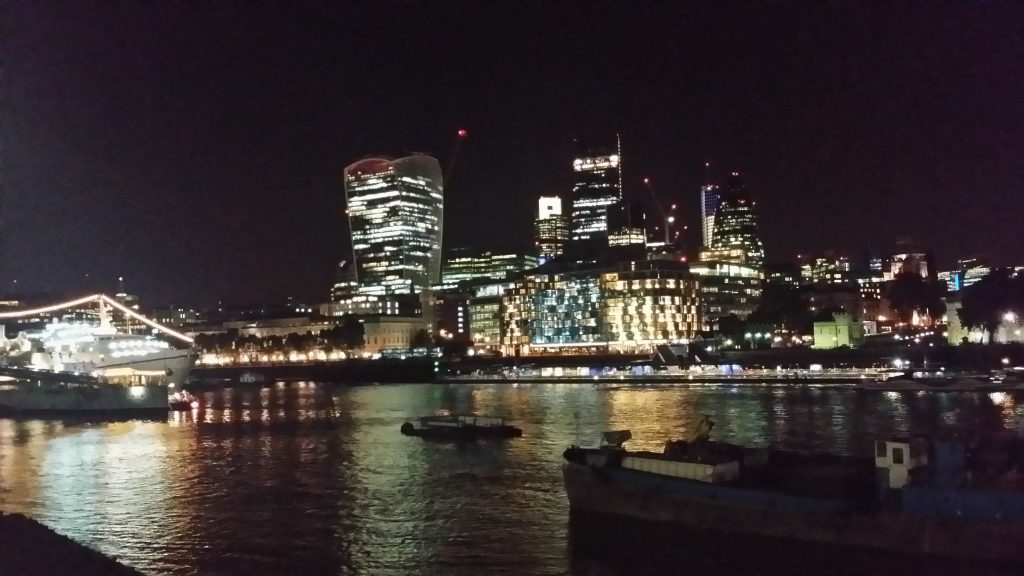
THE FINANCIAL CITY FROM SLAVERY TO HEDGE FUND VIRTUAL WALK
SUNDAY 30th May 2021 6.30pm
A Virtual Walk in the historic City of London on the development of the Financial City from 16th Century to the present day
To book
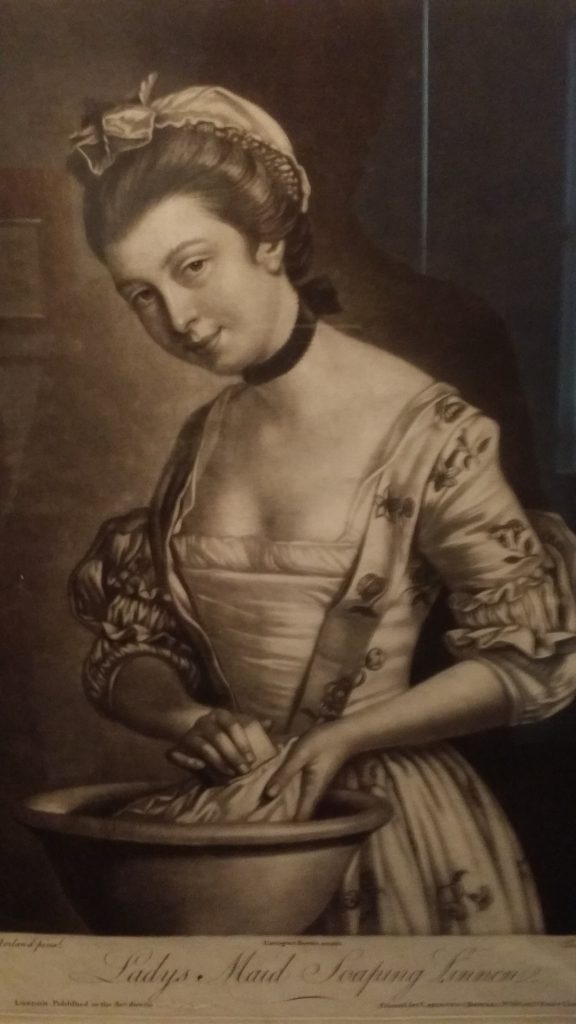
JANE AUSTEN’S VIRTUAL LONDON – A PICTURE OF LONDON 1809 WALK
Sunday 23rd May 2021 6.30pm
With the help of a contemporary Guide Book, her letters, and works we explore Austen’s London
To book
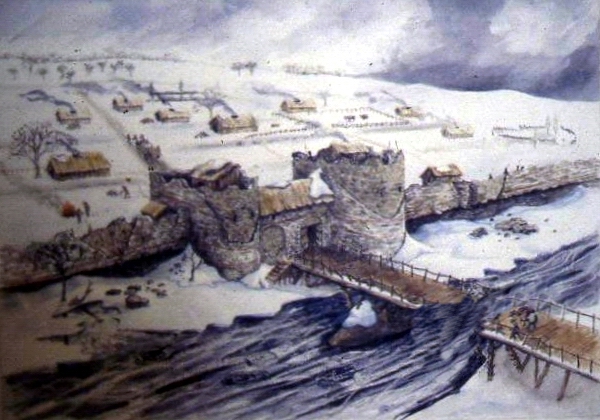
THE DECLINE AND FALL OF ROMAN LONDON ARCHAEOLOGY VIRTUAL WALK
Thursday 13th May 2021 6.30pm
An exploration of what happened at the end of the Roman Period, and how the City became deserted, and then, reborn as an English City.
THE LONDON OF THOMAS MORE AND THOMAS CROMWELL.
THE CITY OF WOLF HALL VIRTUAL BOAT TRIP AND WALK
Sunday 16 May 2021 6.30pm
We begin on the River touring by boat the Tudor Palaces that were the backdrop to the drama of Henry’s Court. We then walk around the City to find where the two Thomases lived and died.
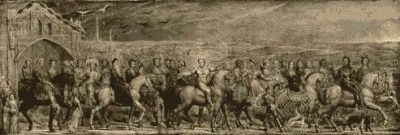
CHAUCER’S LONDON TO CANTERBURY PILGRIMAGE
Sunday 9th May 2021 6.30pm
A Virtual Walk exploring Chaucer’s London, the Canterbury Tales and the route to Canterbury
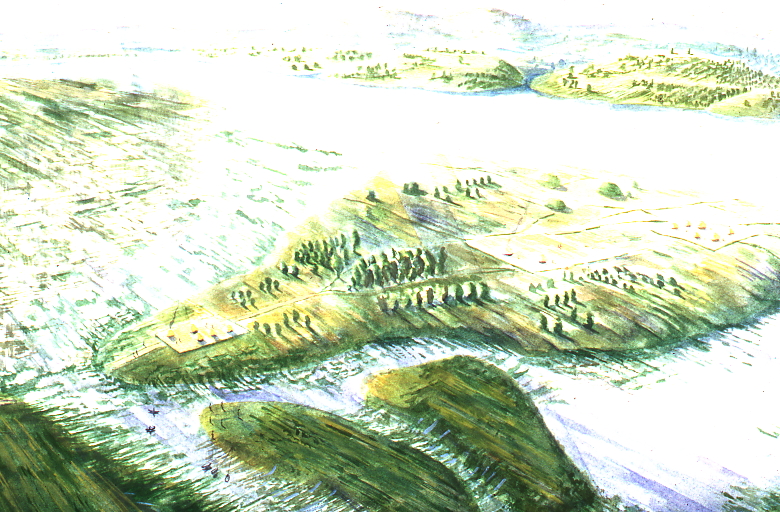
LONDON BEFORE LONDON – PREHISTORIC LONDON VIRTUAL COACH TOUR
Sunday 25th April 2021 6.30pm
An exploration of London before the foundation of Londinium

THE DECLINE AND FALL OF ROMAN LONDON ARCHAEOLOGY VIRTUAL WALK
Sunday 18th April 2021 6.30pm
An exploration of what happened at the end of the Roman Period, and how the City became first deserted, and then a Saxon, German speaking English City.
ROMAN LONDON – ARCHAEOLOGY VIRTUAL TOUR
Sunday 11th April 2021 6.30pm
The virtual walk looks at the amazing archaeological discoveries of Roman Londinium
THE ORIGINS OF LONDON ARCHAEOLOGY WALK
Thursday1st April 2021 6.30pm
The virtual walk looks at the amazing archaeological discoveries that uncovered the many origins of London.

JANE AUSTEN’S VIRTUAL LONDON – A PICTURE OF LONDON 1809 WALK
Sunday 28 March 2021 6.30pm
With the help of a contemporary Guide Book, her letters, and works we explore Austen’s London
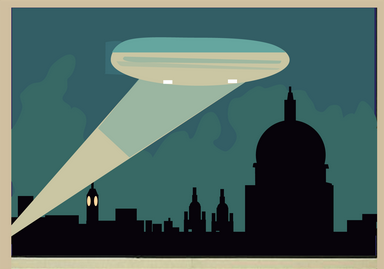
ZEPPELIN NIGHTS – A VIRTUAL WALK FOLLOWING THE 1915 BOMBING RAID THROUGH WW1 LONDON
Sunday 14 March 2021 6.30pm
8th of September 1915, the Zeppelin dropped its first bombs near Russell Square and we follow it to its last bomb at Liverpool Street. On the way we discover London in World War 1
THE DECLINE AND FALL OF ROMAN LONDON ARCHAEOLOGY VIRTUAL WALK
Thursday 18th March 2021 6.30pm
An exploration of what happened at the end of the Roman Period, and how the City became deserted, and then, reborn as an English City.
RING IN THE EQUINOX VIRTUAL WALK
Saturday 20th March 2021 7pm
On this walk we look at London at the Equinox, its calendars, folklore and events associated with the beginning of Spring
MYTHS, LEGENDS OF LONDON VIRTUAL GUIDED WALK
Virtual Guided Walk Sunday 21 March 6.30pm
The walk will tell the story of the legendary origins of London as told by Geoffrey of Monmouth.
ROMAN LONDON – A LITERARY & ARCHAEOLOGICAL VIRTUAL WALK
Sunday 17th Jan 2021 6.30pm
The virtual walk looks at the amazing archaeological discoveries of Roman London, and an attempt to bring to life through archaeology and Roman literary sources what it was like to live in a provincial Roman Capital.
THE REBIRTH OF SAXON LONDON ARCHAEOLOGY VIRTUAL WALK
Sunday 24th Jan 2021 6.30pm
An exploration of what happened following the Roman Period. How did a Celtic speaking Latin educated Roman City become, first deserted, then recovered to become the leading City in a germanic speaking Kingdom?
CHAUCER’S MEDIEVAL LONDON VIRTUAL WALK.
Sunday 31st Jan 2021 6.30pm
A Virtual Walk around Medieval London following in the footsteps of its resident medieval poet – Geoffrey Chaucer
THE ARCHAEOLOGY OF LONDON BRIDGE & THE HISTORIC BOROUGH OF SOUTHWARK VIRTUAL WALK
Sunday 14 February 2021 6.30pm
The walk explores London Bridge and Southwark which are at the heart of pre-Roman, Roman and Medieval London’s Archaeology
Saturday 20 February 2021 7.00pm
A Virtual Walk around Medieval London following in the footsteps of its resident medieval poet – Geoffrey Chaucer
Sunday 21 February 2021 6.30pm
We begin on the River touring by boat the Tudor Palaces that were the backdrop to the drama of Henry’s Court. We then walk around the City to find where the two Thomases lived and died.
To book https://www.eventbrite.com/e/the-london-of-thomas-more-and-thomas-cromwell-wolf-hall-virtual-walk-tickets-136342428875JANE AUSTEN’S VIRTUAL LONDON WALK
Sunday 28 February 2021 6.30pm
Exactly what it says on the tin. With sense, sensibility, pride but no prejudice we’re on the trail of the great novelist. Jane Austen’s London.
This walk has now been completed but will be rerun soon.

Sunday 4th July 2021 6:30 PM
The Romans gave the name of Saxons to barbarian pirates that plagued the North Sea region in the Late Roman Period. Historians link them with the Angles to create the germanic Anglo-Saxon period of which London was the leading town. But excavation and DNA analysis make the traditional story more difficult to sustain and although the Anglo-Saxons have a rich history how much of it can be trusted? Was there a Dark Age? Or was it just a ‘transistion’? How did English become the main language sweeping aside native Celtic languages? Much of the story of Saxon London has been founded on myth and dubious historical sources, but archaeological, documentary and genetic research has beginning to provide a clearer narrative.
Following the fall of Roman Britain, London was almost deserted. On this walk we explore how London recovered and grew to be the most important City in England by 1066. We will concentrate on the period from 600 AD onwards, and will begin with the story of Lundenwic at Covent Garden. We will then walk along the Strand and Fleet Street to visit the empty City of Lundinium which had a rebirth in the 9th Century as Lundenburgh and which grew to become London – the largest City in the Kingdom by 1066.
This is a London Walks event by Kevin Flude To book click :
I do various walks from time to time, nearly all for London Walks. (A list of all the walks. lectures, study tours I have given can be found here):
JANE AUSTEN’S LONDON
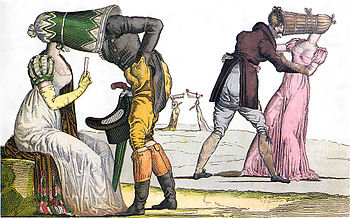
Jane Austen’s London takes place at 2.30 pm on Sunday, July 4th. The meeting point is just outside the Green Park exit (by the fountain) of Green Park Tube.
This is a London Walks Walk. To book click here:
The walk takes in the area of the London section of Sense and Sensibility. This is where Jane Austen frequented when visiting her banking brother, Henry. He lived here during his ‘successful’ period, after resigning as a Captain in the Militia and setting up a bank to help soldiers pay for their commissions. He then did what all good bankers do – went bankrupt and ruined himself, family and friends. His uncle lost 10,000 pounds; his rich brother, Edward Knight lost £20,000. (that is 2/5ths of the fortune of Willoughby’s wife, and equal to the income of Darcy, 100 times the annual income of Mrs Austen after her husband died) i.e. a heck of a lot of money. Jane lost £13.
But this area was also the centre of the Ton – the wealthy elite of Regency London. It was here that the French Royal family, in exile, hung out, and the haunt of Beau Brummel and Prinny, the Prince Regent, loungers in chief who were so well satirised in the figure of Sir Walter Elliot. This is where the Dandies lounged, leered and shopped. Here the rich could get their guns, swords, cigars, snuff, hats, shoes, tailored clothes, uniforms, wine, prostitutes, lovers. They came to visit art galleries, see panoramas of European Cities, to ‘see’ the invisible women living in her glass jar, to choose their Wedgwood pottery.
And what is astonishing is that this is still where the megarich do exactly the same things: hang out and shop. All the top brands are here, and instead of people like John Willoughy are to be found Russian Oligarchs, and the rich of the Emirates, and every other country in the world. And most marvellously many of the shops survive into the present day. The same shops and shop fronts still in use. They catered to the stupidly wealthy of the 18th Century are now catering for the stupidly wealthy of the 21st Century. This is where you can buy luxury yachts.
So we follow Jane and Henry, and see the ghost traces left by immoral Willoughby, sensible Elinor, overwrought Marianne, dull but nice Edward Ferrars, dull and horrible Robert Ferrars, stolid Colonel Brandon, vulgar but kind Mrs Jennings and her unforgivably vulgar daughter Mrs Palmer with her despairing husband; the Middletons, the Steeles gals ruthlessly working their assets. Plus we have a little look at the relationship between Prinny and Beau Brummel, and the terrible childbed of Princess Ch
THE REBIRTH OF SAXON LONDON ARCHAEOLOGY VIRTUAL WALK
Sunday 4th July 2021 6.30pm
An exploration of what happened following the Roman Period. How did a Celtic speaking Latin educated Roman City become, first deserted, then recovered to become the leading City in a germanic speaking Kingdom?
My first virtual walk took place every Sunday at 2pm in August 2020 and was:Myths, Legends and the Archaeological Origins of London in August 2020
and I have since done:
Sunday 25th October 2020 The Archaeology and Culture of Roman London Virtual Walk. For more details click here.
Sunday 1st November 2020 The Decline and Fall of Dark Age London Archaeology Virtual Walk. For more details click here.
Sunday 8th November 2020 The Rebirth of Saxon London Archaeology Virtual Walk For more details click here.
Sunday 22nd November 2020 Flower of Cities All – Medieval London History & Archaeology Virtual Walk For more details click here.
Sunday 29th November 2020. The London of Thomas More and Thomas Cromwell Virtual Walk For more details click here.
Sunday 6th December 2020 The Financial City from Slavery to Hedge Fund Virtual Walk For more details click here.
Sunday 13 th December 2020 Myths, Legends and the Origins of London Archaeology Virtual Walk . For more details of this walk click here.
Walks given recently:
Feb 22 2.30 Bermondsey – Archaeology & History. Bermondsey Tube
7.15 Southwark & Bankside Pub Tour. London Bridge Tube, Tooley St
Feb 1 2.30 Tower Hill to Rotherhithe Riverside Walk. Tower Hill Tube
Feb 2 10.45 Bishopsgate Ward Walk. Liverpool St Tube
Jan 25th 2.30 Wolf Hall London. Liverpool Street Tube
7.15 Blackfriars to Fleet St Pub Tour. Blackfriars Tube
Jan 26 2.30 Romans in London. Monument Tube
2019
Dec 21 10.30 London’s East End – The Peasants’ Revolt to Street Art. Aldgate Tube High Street Exit
2.30 Shakespeare’s London Locations – The places in the plays
Shoreditch High Street Overground Station
Jan 5 10.45 Myths & Legends & the Origins of London. Tower Hill Tube
Nov 23rd 2.30 The City and the Blitz. Moorgate West Tube. For more information
7.15 Hampstead Pub Tour Hampstead Tube For more information
Nov 30th 2.30 In Search of Saxon London. Moorgate Tube. For more information
7.15 Smithfield Pub Tour. Barbican Tube
Myths and Legends and the Origins of London on Saturday at Oct. 5 for details click here
City Backstreets Pub Tour at 7.15 Oct. 5 click here for details
The City and the Blitz on November 23
Decline and Fall of Roman London on Saturday at 2.30 Sept. 28 for details click here:
Chelsea Pub Tour Saturday at 7.15 Sept. 28 for details click here:
Jane Austen’s London 4 May 2019 7.15 Green Park Underground
For more details see blog post:
River Fleet Pub Crawl May 18
on 27th May 2021! T 6.30PM, Bank Tube
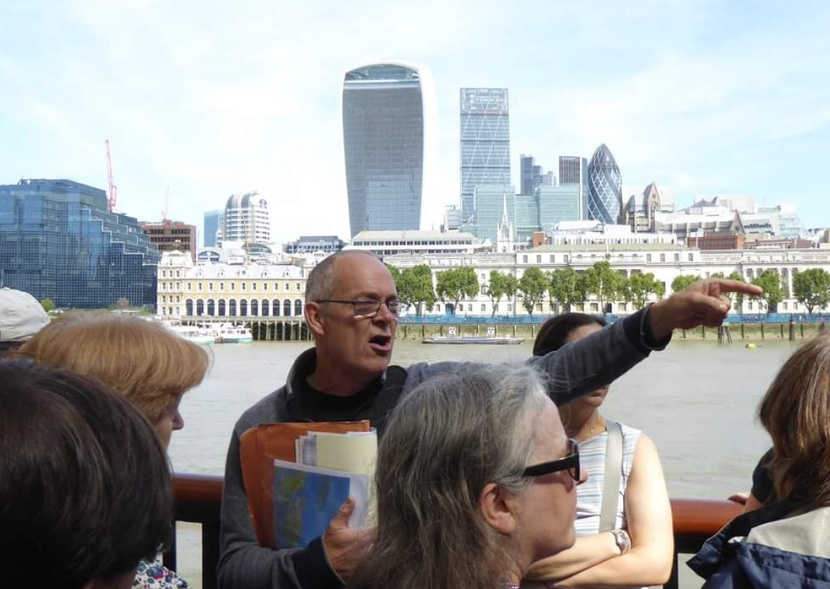
The good news is that I am starting doing real physical Guided Walks again.
Leo Heaton and I are doing an Archaeology walk every Thursday evening at 6.30. We alternate as the Guide.
The plan is to do another walk in the afternoon. I am also putting together a series of special, repertory walks for London walks running throughout the summer.
Here are the details of the walk on 27th May.
ARCHAEOLOGY OF LONDON WALK
Thursday 6.30pm Exit 3 Bank Underground Station
Short Description
A TALE OF FOUR CITIES
Description
Legend says that London was founded as New Troy. Historians believed it was founded as Londinium after the Bridge was built by the legionaries of the Emperor Claudius in AD 43. Archaeologists in the 1970s and 1980s discovered that London was refounded as Lundenwic in the 7th Century and again in the 9th Century when it was called Lundenburg.
This walk tells the epic tale of the uncovering of London’s past by Archaeologists. And provides an insight into the dramatic history of the Capital of Britannia, and how it survived revolts, fires, plagues, and reacted to the decline and fall of the Roman Empire. It became the foremost English City but with periods under Viking and Norman control.
We tell the story in the streets of the City of London, beginning in the valley of the River Walbrook by the Temple of Mithras, and visit many sites where important archaeological discoveries were made, including the Roman Forum, Amphitheatre. Bath Houses, Temples, Roman roads and the City Walls.
To book click here
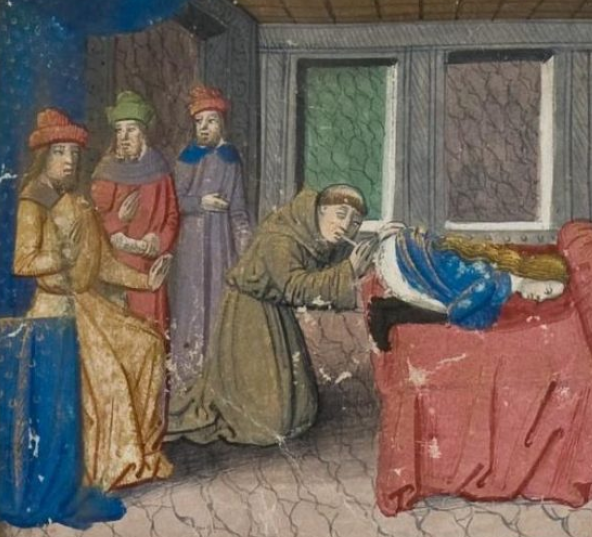
This is a 15th Century French collection of bawdy tales. The illustrated version in the Hunterian, Glasgow has some marvellous illustrations.
To read the stories follow this link to the Project Gutenberg.
THE REBIRTH OF SAXON LONDON ARCHAEOLOGY VIRTUAL WALK

Sunday 4th July 2021 6.30pm
An exploration of what happened following the Roman Period. How did a Celtic speaking Latin educated Roman City become, first deserted, then recovered to become the leading City in a Germanic speaking Kingdom?
To book
THE GREAT FIRE OF LONDON ANNIVERSARY VIRTUAL WALK
Virtual Zoom Walk on Sunday Sept 5th 6.30pm
On the Anniversary of the Great Fire of London we retrace the route of the fire of 1666 from Pudding Lane to Smithfield.
To book
RING IN THE EQUINOX VIRTUAL WALK
Tuesday 21st September 2021 7.30pm
On this walk we look at London at the Equinox, its calendars, folklore and events associated with the beginning of Autumn
To book
MYTHS, LEGENDS, & HALLOWEEN VIRTUAL WALK
SUNDAY 31st October 2021 6.30pm
The walk tells the story of London’s myths and legends and the celtic origins of Halloween. .
To book
ZEPPELIN NIGHTS – A VIRTUAL WALK FOR REMEMBRANCE SUNDAY
Sunday 14 November 2021 6.30pm
We follow the route of a Zeppelin Raid through London. On the way we discover London in World War 1
To book

Saturday 20 February 2021 7.00pm
A Virtual Walk around Medieval London following in the footsteps of its resident medieval poet – Geoffrey Chaucer
One of the spectators at the Peasants Revolt was Geoffrey Chaucer, born in the Vintry area of London, who rose to be a diplomat, a Courtier and London’s Customs Officer. He lived with his wife in the Chamber above the Gate in the City Wall at Aldgate. His poetry shows a rugged, joyous medieval England including many scenes reflecting life in London. His stories document the ending of the feudal system, growing dissatisfaction with the corruption in the Church, and shows the robust independence with which the English led their lives.
His work helped change the fashion from poetry in French or Latin to acceptance of the English language as suitable literary language. This was helped by the growth of literacy in London as its Merchants and Guildsmen became increasingly successful. In 1422, for example, the Brewers decided to keep their records in English ‘as there are many of our craft who have the knowledge of reading and writing in the English idiom.’
Chaucer and other poets such as Langland give a vivid portrait of Medieval London which was dynamic, successful but also torn by crisis such as the Lollard challenge to Catholic hegemony, and the Peasants who revolted against oppression as the ruling classes struggled to resist the increased independence of the working people following the Black Death.
A walk which explores London in the Middle Ages, We begin at Aldgate, and follow Chaucer from his home to his place of work at the Customs House, and then to St Thomas Chapel on London Bridge, and through London to Poultry, Bucklersbury and Cheapside before visiting the Guildhall and St Pauls. We will walk in the muddy City Streets, exploring the unhealthy conditions and poverty amidst great riches and pageantry.
This is a London Walks event by Kevin Flude
To Book:
I have recorded a short podcast as an introduction to my Chaucer’s London Virtual Walk for London Walks which is this Saturday at 7pm on 20 February 2021
To listen to the podcast press play
On Sunday 14th Feb 2021 at 6.30pm (GMT) I am doing a Virtual Walks for London Walks. Here is my podcast.
To book for the Walk, click here: